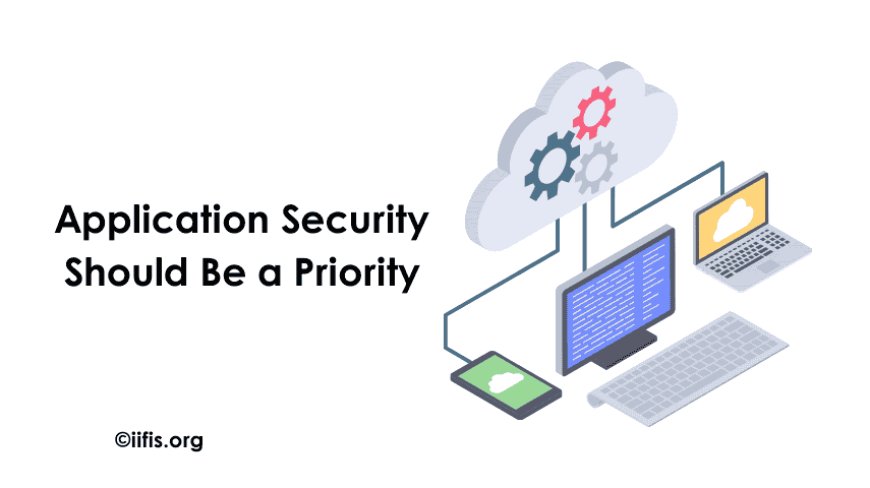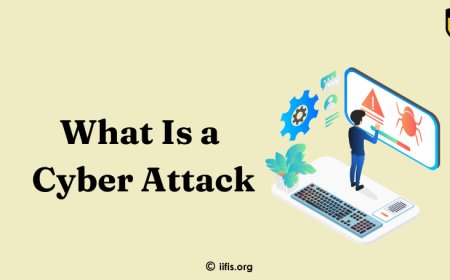Why Application Security Should Be a Priority
Learn why application security should be a top priority for businesses to protect sensitive data, maintain customer trust, and ensure compliance with regulations.

Where applications are integral to business operations and user interactions, application security must be a top priority. With increasing cyber threats and advanced attacks,weaknesses in applications can lead to significant data violations and financial losses. Prioritizing application security not only protects sensitive information but also improves user trust and compliance with regulations. By investing in strong security measures, organizations can protect their assets, maintain their reputation, and ensure a safer digital experience for their users.
Understanding Application Security
1. What is Application Security?
Application security refers to the process of making apps more secure by identifying, fixing, and preventing security weaknesses. It includes measures taken to improve the security of applications during their design, development, and deployment phases. These measures aim to prevent data breaches, unauthorized access, and other forms of cyberattacks that target software systems.
2. Key Practices and Tools in Application Security
Application security includes both hardware and software methods to protect an application from external threats. Some common practices include:
-
Input Validation: Ensuring that user-provided data is correctly validated to avoid injection attacks.
-
Authentication and Authorization: Verifying the identity of users and limiting access to sensitive areas of the application.
-
Encryption: Protecting sensitive data at rest and in transit using encryption algorithms.
-
Security Testing: Implementing Weaknesses scanners, static and dynamic testing, and code review tools to detect weaknesses before deployment.
-
Patch Management: Keeping software and libraries up to date to address newly discovered vulnerabilities.
Common Tools:
-
Static Application Security Testing (SAST): Tools that analyze source code to identify security vulnerabilities early in the development process.
-
Dynamic Application Security Testing (DAST): Tools that test running applications to find vulnerabilities from an external attacker’s perspective.
-
Web Application Firewalls (WAF): Tools that monitor, filter, and block HTTP requests to protect against web-based attacks.
1. Common Weaknesses
Here are some of the most frequent threats applications face:
-
SQL Injection (SQLi): Attackers manipulate SQL queries by injecting malicious code to gain unauthorized access to databases or retrieve sensitive data.
-
Cross-Site Scripting (XSS): Attackers inject malicious scripts into web pages viewed by users, often leading to data theft, session hijacking, or spreading malware.
-
Cross-Site Request Forgery (CSRF): Attackers trick users into unknowingly submitting malicious requests, leading to unauthorized actions.
-
Insecure Deserialization: Attackers exploit insecure object deserialization to execute arbitrary code, manipulate data, or launch denial-of-service attacks.
-
Broken Authentication and Session Management: Improper handling of user sessions and authentication mechanisms can allow attackers to impersonate legitimate users.
The Importance of Application Security
1. Safeguarding Personal and Business Data
Application security plays a critical role in protecting both personal and business data from unauthorized access, theft, or manipulation. With the increasing use of applications in various industries, including finance, healthcare, and e-commerce, vast amounts of sensitive information are processed and stored, such as:
-
Personal Identifiable Information (PII): Names, addresses, Social Security numbers, and other identifiers.
-
Financial Data: Bank accounts, credit card numbers, and transaction histories.
-
Business Data: Proprietary information, trade secrets, and intellectual property.
Application security practices like encryption, secure authentication, and access control help prevent cybercriminals from exploiting vulnerabilities to access this data. Without strong security measures, organizations risk data breaches, which can lead to significant financial losses, reputational damage, and legal consequences.
Maintaining Customer Trust
Security is essential for building and retaining customer trust. A violation can damage a company's reputation and lead to loss of business. By prioritizing security, companies reassure customers that their data is safe, gaining a competitive edge and maintaining loyalty.
Compliance and Regulatory Requirements
Application security ensures compliance with regulations like GDPR, HIPAA, and PCI DSS, which mandate the protection of sensitive data. Adhering to these laws helps businesses avoid penalties and improves data security, fostering customer trust and protecting their reputation.
Consequences of Neglecting Application Security
Neglecting application security can lead to serious consequences in three main areas:

Financial Implications
-
Data Breach Costs: Breaches can cost millions in lost data, containment, and recovery.
-
Remediation and Downtime: Fixing vulnerabilities and restoring operations leads to additional expenses.
-
Higher Insurance Premiums: Breaches may increase cyber insurance costs.
Reputational Damage
-
Loss of Customer Trust: Breaches erode trust and drive customers away.
-
Negative Media Attention: Publicized breaches damage brand image.
-
Decreased Market Value: Stock prices often fall post-breach, hurting investor confidence.
Legal Repercussions
-
Regulatory Fines: Laws like GDPR can impose hefty fines.
-
Lawsuits: Customers and partners may sue for negligence.
-
Compliance Violations: Breaches can lead to legal penalties in regulated industries.
Best Practices for Improving Application Security
Proactive security investment is far cheaper than dealing with these consequences.
Conducting Regular Security Assessments
-
Weakness Testing: Regular penetration testing and vulnerability scans help identify and fix security gaps before attackers exploit them.
-
Code Reviews: Regular reviews of code for security flaws ensure that vulnerabilities are caught early in the development process, reducing risks and improving overall security posture.
Implementing Secure Development Practices
-
Secure Coding Standards: Following industry standards like OWASP and adopting secure coding guidelines reduces the chances of common vulnerabilities such as SQL injection and cross-site scripting.
-
Threat Modeling: Identifying potential security threats early in the design phase ensures that security is built into the application from the ground up.
Continuous Monitoring and Incident Response
-
Monitoring: Continuous monitoring of applications helps detect anomalies or security threats in real-time, enabling a quick response.
-
Incident Response Plan: Having a well-defined incident response plan ensures that when security incidents occur, the organization can minimize damage and recover quickly.
By integrating these practices into the development lifecycle, organizations can significantly strengthen their application security.
Application security is essential to protect businesses from financial losses, reputational harm, and legal issues. Key practices include conducting regular security assessments, using secure coding standards, and continuously monitoring applications with an effective incident response plan.
Businesses, especially those in regulated industries like financial services and IIFIS, must prioritize security to avoid costly breaches and loss of customer trust. Investing in strong security measures now helps prevent major issues later and ensures long-term business success.























